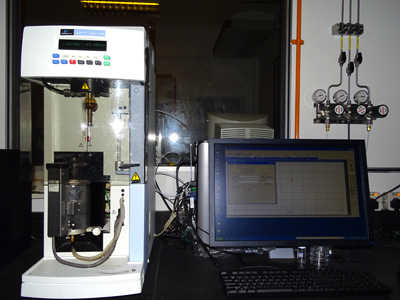
Person in Charge
Ts. Salifairus Mohamad Jafar
Tel : +603-5544 4415
Email : salifairus@uitm.edu.my
Centre :
CENTRE FOR FUNCTIONAL MATERIALS & NANOTECHNOLOGY (CFMN)
Thermogravimetric analysis or thermal gravimetric analysis (TGA) is a method of thermal analysis in which changes in physical and chemical properties of materials are measured as a function of increasing temperature (with constant heating rate), or as a function of time (with constant temperature and/or constant mass loss). TGA can provide information about physical phenomena, such as second-order phase transitions, including vaporization, sublimation, absorption, adsorption, and desorption. Likewise, TGA can provide information about chemical phenomena including chemisorptions, desolvation (especially dehydration), decomposition, and solid-gas reactions (e.g., oxidation or reduction).
TGA is commonly used to determine selected characteristics of materials that exhibit either mass loss or gain due to decomposition, oxidation, or loss of volatiles (such as moisture). Common applications of TGA are materials characterization through analysis of characteristic decomposition patterns, studies of degradation mechanisms and reaction kinetics, determination of organic content in a sample, and determination of inorganic (e.g. ash) content in a sample, which may be useful for corroborating predicted material structures or simply used as a chemical analysis. It is an especially useful technique for the study of polymeric materials, including thermoplastics, thermosets, elastomers, composites, plastic films, fibers, coatings and paints. Discussion of the TGA apparatus, methods, and trace analysis will be elaborated upon below. Thermal stability, oxidation, and combustion, all of which are possible interpretations of TGA traces, will also be discussed.
Model: Pyris1
Brand: Perkin Elmer
